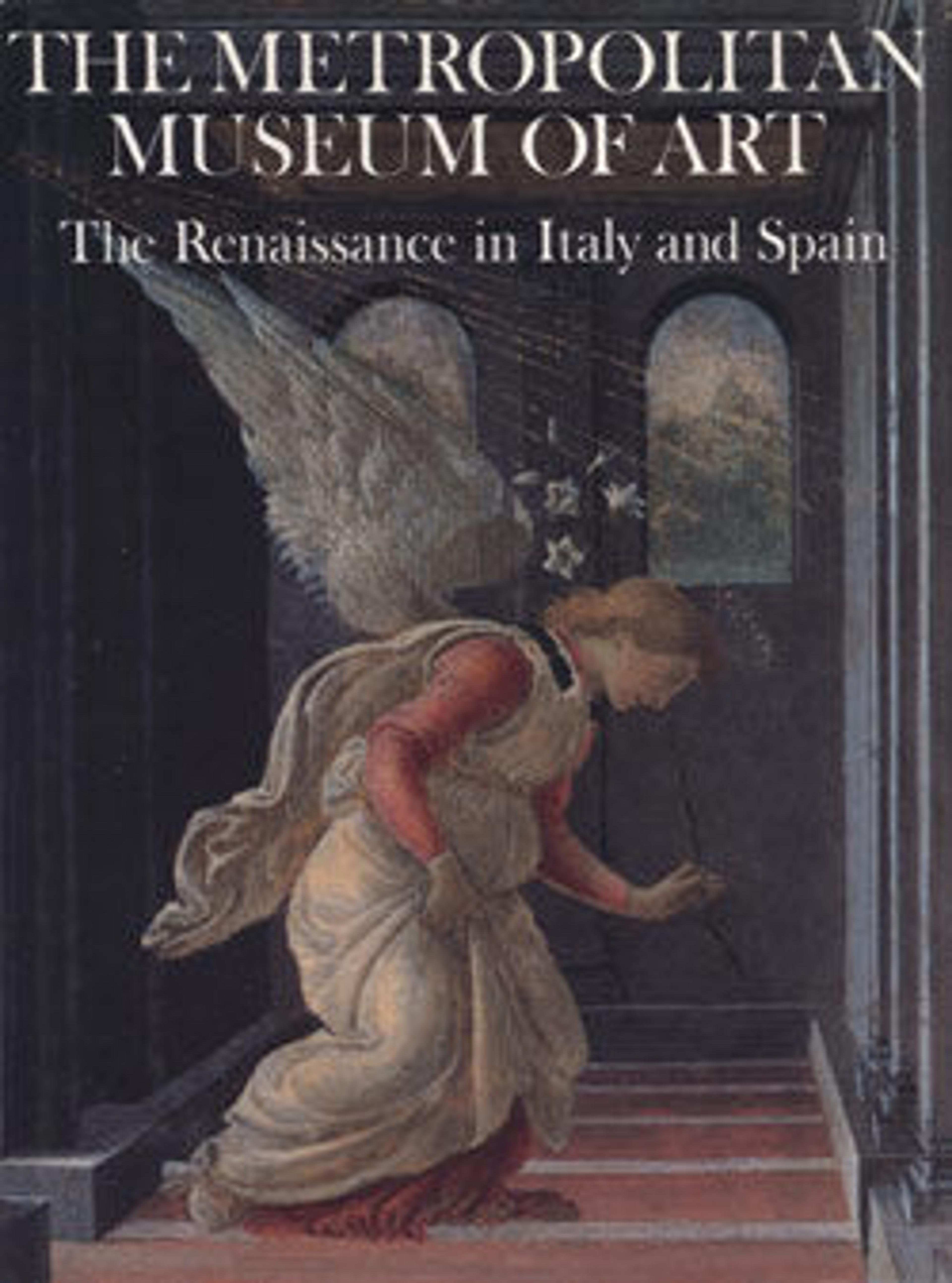Sanctuary lamp (Cesendello)
This type of hanging lamp, known as a cesendello, was a common element in bronze chandeliers known as polychandelons in Roman and Byzantine times and later became popular in both Venice and the Islamic world as larger individual lamps. Extraordinarily delicate, few cesendelli from the Renaissance period survive. The Christian subject matter—the Annunciation to the Virgin Mary—represented in the roundels of this example confirms its patron was from Venice rather than the Islamic world.
This lamp would have been suspended with chains, filled with oil and a wick, when lit casting marvelous shadows on the church walls and floor. The Annunciate Virgin and Angel Gabriel are finely rendered in difficult enamel paint, applied between firings. Busts of Saints Peter and Paul suggest this might once have been part of a group of six, depicting the twelve apostles.
This lamp would have been suspended with chains, filled with oil and a wick, when lit casting marvelous shadows on the church walls and floor. The Annunciate Virgin and Angel Gabriel are finely rendered in difficult enamel paint, applied between firings. Busts of Saints Peter and Paul suggest this might once have been part of a group of six, depicting the twelve apostles.
Artwork Details
- Title:Sanctuary lamp (Cesendello)
- Date:late 15th or early 16th century
- Culture:Italian, Venice (Murano)
- Medium:Glass, enameled and gilt
- Dimensions:Height: 14 1/4 in. (36.2 cm)
- Classification:Glass
- Credit Line:Rogers Fund, 1914
- Object Number:14.83
- Curatorial Department: European Sculpture and Decorative Arts
More Artwork
Research Resources
The Met provides unparalleled resources for research and welcomes an international community of students and scholars. The Met's Open Access API is where creators and researchers can connect to the The Met collection. Open Access data and public domain images are available for unrestricted commercial and noncommercial use without permission or fee.
To request images under copyright and other restrictions, please use this Image Request form.
Feedback
We continue to research and examine historical and cultural context for objects in The Met collection. If you have comments or questions about this object record, please contact us using the form below. The Museum looks forward to receiving your comments.
